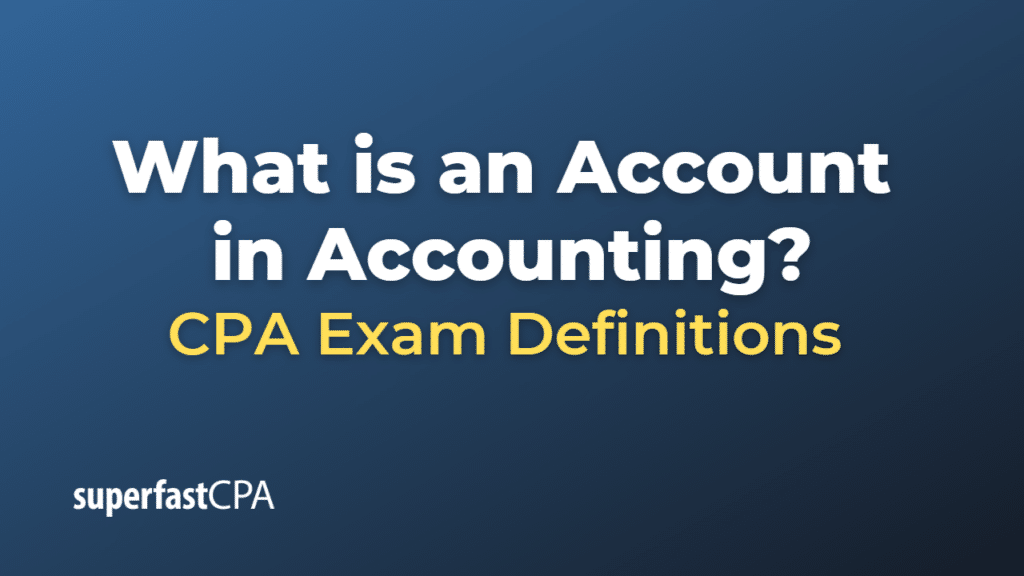Account in Accounting
In accounting, an account refers to a record used to track and organize financial transactions related to a specific asset, liability, equity, revenue, or expense. Each account is assigned a unique identifier, often a name or number, to help distinguish it from others. Accounts are used to systematically categorize, summarize, and present financial information, making it easier to understand a company’s financial position and performance.
Accounts are maintained in a company’s general ledger, which is the central record-keeping system for all financial transactions. The general ledger is organized according to the chart of accounts, which is a list of all the accounts used by a company. The chart of accounts is typically structured in accordance with the accounting equation (Assets = Liabilities + Equity) and follows a standard format to ensure consistency and comparability across different businesses.
Some common types of accounts include:
- Assets: Resources owned or controlled by a company that have future economic value, such as cash, accounts receivable, inventory, and property, plant, and equipment.
- Liabilities: Obligations a company owes to others, such as accounts payable, loans, and salaries payable.
- Equity: The residual interest in a company’s assets after deducting liabilities, representing the owners’ claims, such as common stock, retained earnings, and additional paid-in capital.
- Revenue: Income generated from a company’s regular business activities, such as sales, interest income, and rental income.
- Expenses: Costs incurred in the course of operating a business, such as salaries and wages, rent, and utilities.
In a double-entry accounting system, each financial transaction is recorded as both a debit and a credit to maintain the accounting equation’s balance. The balance of each account is determined by the difference between the total debits and credits recorded. Financial statements, such as the balance sheet and income statement, are generated using the information from these accounts to provide insights into a company’s financial health.
Example of an Account
Let’s say we have a small business called “ABC Electronics.” Here’s a simple example of a financial transaction and how it would be recorded in the company’s accounting system using double-entry bookkeeping.
Transaction: ABC Electronics purchases $5,000 worth of inventory on credit from its supplier.
In this transaction, ABC Electronics is acquiring inventory (an asset) and incurring a liability (accounts payable) because the company has not yet paid for the inventory. The double-entry accounting system requires that both aspects of the transaction be recorded.
Here’s how the journal entry would look:
- Debit: Inventory (Asset) – $5,000
- Credit: Accounts Payable (Liability) – $5,000
The journal entry records a debit to the Inventory account, increasing its balance by $5,000, and a credit to the Accounts Payable account, increasing its balance by $5,000.
This entry shows that ABC Electronics now has $5,000 more inventory and also owes $5,000 to its supplier. The accounting equation remains in balance because both the assets and liabilities have increased by the same amount.
Assets = Liabilities + Equity (Original Assets + $5,000) = (Original Liabilities + $5,000) + Original Equity
The financial statements, such as the balance sheet and income statement, will reflect these changes in the accounts. The balance sheet will show an increase in the Inventory account under assets and an increase in the Accounts Payable account under liabilities. The income statement will not be affected by this transaction, as it involves neither revenue nor expenses.













